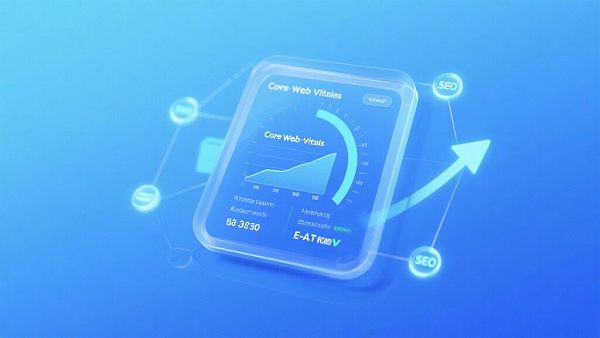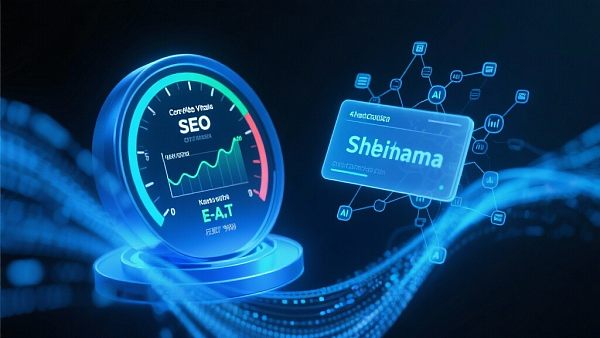EasyStore Cloud Intelligent Website Marketing System Platform!
I. Methods to Improve Website SEO Optimization Effectiveness: Core Definition and 4 Strategic Dimensions
1. Core Definition: The Essence of SEO Effectiveness Enhancement
**Improving website SEO optimization effectiveness** refers to systematically enhancing a website's **visibility, authority, and traffic quality** in search engine results pages (SERP) through a series of strategies and technical means, ultimately achieving **natural traffic growth, keyword ranking improvements, higher click-through rates (CTR), and increased business conversion rates**. Its essence lies in **fulfilling user search intent and adhering to search engine algorithm principles**.
2. 4 Strategic Dimensions for SEO Effectiveness Enhancement (2025 Framework)
Modern SEO optimization is no longer limited to single technical points but must comprehensively cover:
- **Technical Dimension (Technical SEO):** Ensure the website's **crawlability, indexability, and performance**. The core is achieving Core Web Vitals standards.
- **Content Dimension (Content SEO):** Ensure content **deeply satisfies user intent** and features **keyword semantic coverage and structured organization**.
- **Authority Dimension (E-E-A-T):** Build brand trust through **expert experience, author credentials, brand mentions, and link-building**.
- **User Experience Dimension (UX/CRO):** Focus on **user behavior metrics (Dwell Time, CVR, Pogo-sticking)** and optimize them as ranking signals.
3. The Evolution of SEO Effectiveness Enhancement Methods
Early stage (2000s): Dominated by **keyword stuffing and buying backlinks**. Mid-stage (2010s): Shifted to **content marketing and diversified linking**, with Google introducing Panda and Penguin algorithms. Modern era (2020s-present): Entered the **"user-centric, AI-powered"** era. Optimization methods focus on **mobile-first, CWV performance, E-E-A-T authority, and leveraging AI for search intent and content generation**. Effectiveness measurement shifted from rankings to **traffic quality and business conversion**.
II. 5 Core Technical Principles and Practices for SEO Optimization Effectiveness Enhancement

Master the underlying technologies affecting Google crawling, indexing, and ranking:
1. Core Web Vitals (CWV) Performance Optimization Principle
Principle: CWV (LCP, FID/INP, CLS) are Google's core metrics for user experience. Practice: Ensure **loading speed (LCP) and interactivity (INP)** meet standards through **global CDN deployment, next-gen image formats (WebP, AVIF), and removing redundant CSS/JS**. CWV compliance is the **technical foundation** for ranking improvements.
2. Advanced Application Principle of Schema Structured Data
Principle: Schema helps search engines understand page content specifics. Practice: Beyond basic Product/Organization Schema, use advanced Schemas like **HowTo, FAQPage, VideoObject** to **earn rich snippets**, significantly boosting **CTR** and indirectly improving rankings.
3. Search Intent Matching and Content Clustering Principle
Principle: Google rewards pages that deeply satisfy user search intent. Practice: Use AI tools to analyze target keywords' **SERP results**, identify true intent. Adopt **Topic Cluster** models, creating **Pillar Content and Cluster Content**, with strong internal linking to demonstrate expertise.
4. E-E-A-T Authority and Author/Brand Verification Principle
Principle: Content must be authored by **"experienced and knowledgeable"** authorities. Practice: Ensure all key content (especially in YMYL fields) displays clear **author bios, professional credentials, and social media links**. Use **SameAs Schema** to associate official authors with authoritative profiles like LinkedIn, enhancing E-E-A-T signals.
5. Automated Backlink Monitoring and Content Citation Principle
Principle: High-quality backlinks remain core ranking factors. Practice: Use automation tools to **monitor brand mentions**, converting unlinked mentions into backlinks. Optimize content to become **industry-citable resources**, attracting organic links from quality sites rather than low-quality link exchanges.
III. 4 Major Methods and Application Scenarios for Improving SEO Optimization Effectiveness
1. Method One: CRO Optimization Driven by User Behavior
Application: Use **GA4/Hotjar** to analyze **low-ranking pages'** user behavior data. If pages show **short dwell times and high bounce rates**, content fails to meet user intent. Optimize **titles, above-the-fold content, CTAs** via **A/B testing** to improve Dwell Time and CVR, proving page value to Google.
2. Method Two: Leveraging AI for Multilingual Content SEO Localization
Application: Foreign trade websites must target multiple markets. After **AI translation**, ensure **manual review and localized SEO semantic optimization** to align translated keywords and search intent with **local expression habits**. Accurately deploy **Hreflang tags**.
3. Method Three: "Deep Flattening" Optimization of Website Architecture
Application: Ensure all key pages are **no more than 3 clicks away** (i.e., "deep flattening"). Optimize **main navigation, breadcrumbs, and internal linking** to enhance **crawling efficiency and PageRank distribution**, making site structure clearer and boosting overall ranking potential.
4. Method Four: Ongoing Content Audits and Refreshes (Content Refresh)
Application: SEO effectiveness isn't a one-time effort. Conduct **quarterly audits** to identify **pages with ranking drops or traffic stagnation**. Use **content refresh** methods (e.g., **updating data, adding E-E-A-T elements, re-optimizing H1/Title**) to reactivate pages with minimal investment.
IV. Comparative Analysis and Industry Scenarios of SEO Optimization Methods

1. White Hat SEO vs. Black Hat SEO Comparative Analysis
**Expert Advice:** Any method aimed at improving SEO effectiveness must adhere to **white hat principles**. Black hat methods, even if temporarily effective, carry long-term catastrophic risks.
2. Typical Industry Scenarios for Improving SEO Optimization Effectiveness
Different industries prioritize different SEO optimization methods:
- **B2B Industrial Export:** Focus on **product technical parameter pages' Schema structured data** and **expert technical blogs' E-E-A-T authority** to capture high-value inquiries.
- **Cross-border E-commerce DTC Brands:** Prioritize **CWV performance (especially mobile), product image SEO optimization, and UGC content (reviews) Schema deployment** to acquire high-conversion traffic.
- **SaaS/Service Industry:** Emphasize **Topic Cluster model construction** and **author/consultant E-E-A-T verification** to establish industry thought leadership.
3. Certification Standards and Professional Norms for Improving SEO Optimization Effectiveness
Industry standards for measuring SEO optimization effectiveness:
- **Google Search Console Health:** Core metrics like **crawl error rates, index coverage, CWV reports** must remain healthy.
- **E-E-A-T Audit Norms:** Follow Google QRG (Quality Rater Guidelines) to periodically audit **author credentials, company profiles, privacy policies**, ensuring trustworthiness.
- **International SEO Compliance:** Ensure multilingual sites' **Hreflang tag deployment** is correct and comply with **GDPR/CCPA** data privacy laws.
V. Take Immediate Action to Upgrade Your Website into a High-Conversion SEO Growth Engine!
Is your website losing high-value traffic due to **technical lag, shallow content, or missing E-E-A-T**? Mastering the latest **methods to improve website SEO optimization effectiveness** is key to your business growth! Our SEO expert team specializes in implementing **CWV performance optimization, advanced Schema deployment, AI-driven content upgrades, and E-E-A-T authority building**. Book a **free "Website SEO Health & Growth Potential Diagnosis"** now, and we'll create a customized 2025 Google algorithm-aligned growth roadmap for you!
Click to Get Free SEO Diagnostic ReportFAQ

Customer Reviews


